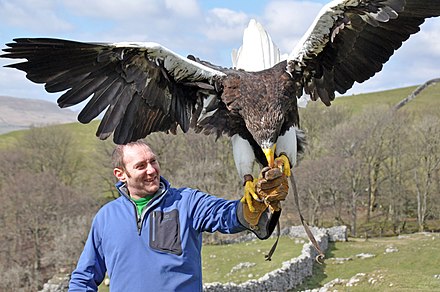Steller’s sea eagles (Haliaeetus pelagicus) are large birds of prey found in the coastal regions of northeastern Asia. These majestic birds are known for their impressive size, powerful talons, and hunting prowess. However, the question remains: do Steller’s sea eagles eat plants?
The Diet of Steller’s Sea Eagles
Steller’s sea eagles are primarily carnivorous, with a diet that consists mainly of fish and other aquatic animals. They are skilled hunters, using their sharp eyesight and powerful talons to capture their prey from the water’s surface or while in flight.
Fish
The primary food source for Steller’s sea eagles is fish, particularly salmon and trout. These birds are adept at spotting and catching live fish, as well as scavenging for dead or dying fish. They are known to dive into the water to catch their prey, using their strong talons to grasp and carry the fish back to their nesting sites or perches.
Aquatic Invertebrates
In addition to fish, Steller’s sea eagles also feed on various aquatic invertebrates, such as crabs, mussels, and squid. These animals are often found in the coastal habitats where the eagles reside, providing a supplementary food source when fish may be scarce.
Small Animals and Carrion
While fish and aquatic invertebrates make up the majority of their diet, Steller’s sea eagles have also been known to prey on small mammals, birds, and even carrion. They may scavenge for dead animals or hunt small rodents, birds, or other small creatures that inhabit their coastal environments.
Do Steller’s Sea Eagles Eat Plants?
 Image source: stellers sea eagle
Image source: stellers sea eagle
Based on the available evidence, there is no indication that Steller’s sea eagles include plants in their diet. These birds are strictly carnivorous and do not consume any plant-based foods.
Lack of Evidence
Extensive research on the feeding habits and dietary preferences of Steller’s sea eagles has not revealed any instances of these birds consuming plants, whether in the form of leaves, fruits, or other plant matter. Their hunting and foraging behaviors are focused entirely on capturing and consuming animal-based prey.
Specialized Adaptations
Steller’s sea eagles are adapted for a carnivorous lifestyle, with features such as sharp talons, hooked beaks, and powerful wings that are well-suited for hunting and tearing apart their prey. Their digestive system is also designed to process and extract nutrients from animal-based foods, rather than plant-based materials.
Habitat and Behavior
The coastal habitats where Steller’s sea eagles reside are typically dominated by marine and aquatic ecosystems, with limited access to terrestrial plant life. These birds spend the majority of their time hunting and foraging in the water, further reinforcing their reliance on aquatic prey as their primary food source.
Conclusion
In conclusion, the available evidence clearly indicates that Steller’s sea eagles are strictly carnivorous and do not include plants in their diet. These majestic birds are specialized predators, focusing their hunting and foraging efforts on fish, aquatic invertebrates, small animals, and carrion. Their physical adaptations and behavioral patterns are tailored to a diet that is entirely animal-based, with no evidence of plant consumption.
References:
- Haliaeetus pelagicus – Steller’s sea-eagle. Animal Diversity Web. https://animaldiversity.org/accounts/Haliaeetus_pelagicus/
- BirdLife International. 2007. Haliaeetus pelagicus. The IUCN Red List of Threatened Species 2007: e.T226979A12518827. https://dx.doi.org/10.2305/IUCN.UK.2007.RLTS.T226979A12518827.en
- Steller’s Sea-eagle. San Diego Zoo Animals & Plants. https://animals.sandiegozoo.org/animals/stellers-sea-eagle
- Stellers Sea Eagle – Haliaeetus pelagicus. Carnivora. https://carnivora.net/stellers-sea-eagle-haliaeetus-pelagicus-t2363.html

